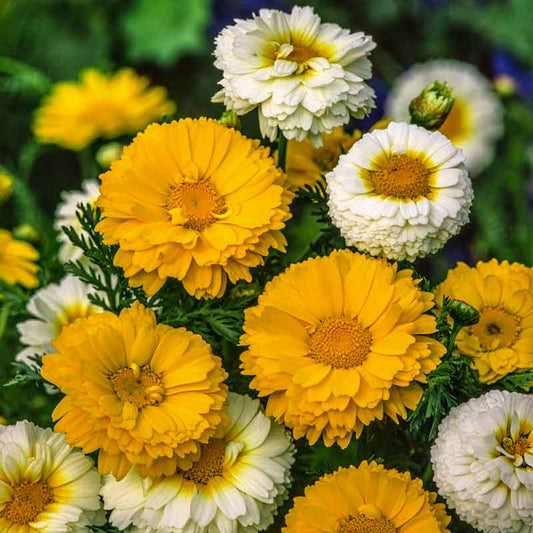-
main-collection-product-grid

Daisy Seeds (Painted) - Rainbow Mix
The go-to daisy for a kid's gardenDaisy Seeds (Painted) - Rainbow Mix
The go-to daisy for a kid's gardenRegular price As Low As $4.99Regular priceUnit price per -
main-collection-product-grid

Daisy Seeds - Creeping Daisy
Diminutive plants ideal for ground cover or bordersDaisy Seeds - Creeping Daisy
Diminutive plants ideal for ground cover or bordersRegular price As Low As $4.99Regular priceUnit price per -
main-collection-product-grid

Daisy Seeds - Ox-Eye
There's hardly a more symbolic summer flowerDaisy Seeds - Ox-Eye
There's hardly a more symbolic summer flowerRegular price As Low As $4.99Regular priceUnit price per -
main-collection-product-grid

Daisy Seeds - Garland Double Mix
A late season bloomer, flowering summer into fallDaisy Seeds - Garland Double Mix
A late season bloomer, flowering summer into fallRegular price As Low As $4.99Regular priceUnit price per -
main-collection-product-grid

Daisy Seeds (African) - Mixed
Believe it or not, these vibrant, glimmering petals are undyedDaisy Seeds (African) - Mixed
Believe it or not, these vibrant, glimmering petals are undyedRegular price As Low As $4.99Regular priceUnit price per -
main-collection-product-grid

Daisy Seeds - German Flag
Whatever your heritage, these bold blooms will make you proudDaisy Seeds - German Flag
Whatever your heritage, these bold blooms will make you proudRegular price As Low As $4.99Regular priceUnit price per
Growing heirloom daisies in your yard
- 6 heirloom daisy seed varieties
- Daisies are easy to grow, fun-loving flowers
- Attracts pollinators
- Prefers full sun exposure
Heirloom daisies have evolved into one of the most well-known flowers on the planet. It was dubbed "eye of the day" by Chaucer. Many people believe that the word "daisy" is a corruption of "day's eye," because the entire head shuts at night and reopens the next morning. The daisy is native to central, western, and northern Europe, but it has spread throughout most temperate climates, including the Americas, where it is commonly employed as ground cover.
Despite the fact that daisies do not require an introduction, not everyone is especially familiar with them. This colorful flower, which is often used to make daisy chains for children, has so much more to offer. They are herbaceous perennials that are not only attractive but also tasty! Young leaves can be cooked or prepared and served in salads. Flowers are frequently used in salads and as cake decorations. Heirloom daisies have an exceptionally extended flowering season when grown in perfect conditions, sometimes even producing a flower or two in the winter. There are nearly infinite kinds to pick from, ensuring that even the most discerning gardener will find a daisy to suit their needs.
Daisies are well-known for being practically effortless to grow, which adds to their appeal. Plant them in a sunny, well-draining region in the spring, summer, or fall. Most gardeners simply spread the seeds straight in the garden because they are so easy to cultivate. Simply scratch the top of the soil with a rake or a hoe to prepare it. Then throw the seeds on top of the soil, covering them lightly with about 1/8th inch of soil. Maintaining a good level of moisture while the seeds are developing is critical. The average germination time is 14 days. In the early phases of growth, a general fertilizer can be applied, and then monthly after that. Before the daisies bloom, move to a high-phosphorus fertilizer for bigger, brighter flowers.
Once established, you can separate your varieties by division every three to four years to avoid overcrowding. If you live in a cold climate, give your daisies a layer of winter protection with mulch.
For more information about planting, growing, and caring for heirloom daisies, see the Daisy Seeds Planting Guide.





